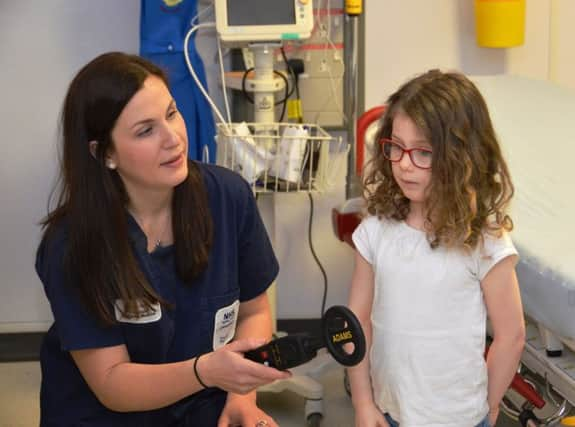NHS staff use metal detector to avoid giving children X-ray


The clever idea to find out if a patient has swallowed a metal object has been successfully tested in the emergency department at Monklands Hospital in Airdrie.
It’s hoped the initiative, primarily used with children, will now be introduced at NHS Lanarkshire’s two other emergency departments – at Hairmyres Hospital in East Kilbride and Wishaw General Hospital.
Advertisement
Hide AdAdvertisement
Hide AdA project assessing the benefits of the hand-held metal detector at Monklands Hospital found it cut the percentage of patients needing X-rays after possibly swallowing coins or other bits of metal. Before the detector was used, 80 per cent of them had X-rays – but that was reduced to 50 per cent after it was brought in.
Emergency department registrar Dr Nicola Moultrie ran the project, informally known as Hunting for Swallowed Treasure, as part of her studies to become a consultant.
She said: “Parents and carers sometimes attend with children they think may have swallowed a metal foreign body.
“Normally the children would have one or more X-rays to make sure the object isn’t stuck in their gullet, which can cause potentially fatal complications.
“But the metal detector means they don’t have to go through the possibly upsetting experience of an X-ray examination and they avoid the exposure to radiation that comes with radiography.
“We just run the detector over them and, if it bleeps and the light flashes, we know they have swallowed something metallic. Depending where it is in their body, some patients can go home without the need for radiological imaging. It saves time for the patients and the staff.”
Emergency department consultant Dr Fiona Hunter, who oversaw Nicola’s project, said: “We were both aware that detectors had previously been used in some emergency departments in Scotland and introducing it to Lanarkshire has been a great success.
“There is the added bonus of the savings made from doing fewer X-rays, which are around £55 each. The detector cost less than £400 so it has quickly paid for itself.”